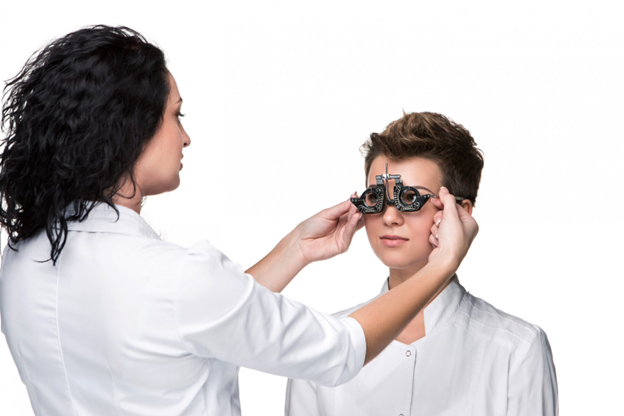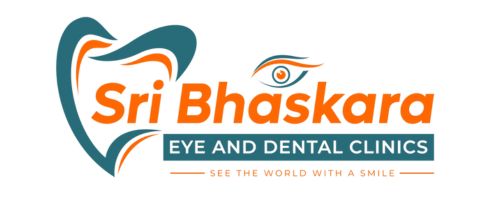Our eyes play a crucial role in how we experience the world. Sometimes, though, they don’t function perfectly. This is where refractive errors come in. Understanding these errors can help you take better care of your vision.
What Are Refractive Errors?
Vision isn’t just about seeing; it’s about how light enters your eyes and gets processed. Normally, light should focus directly on the retina, the back part of the eye. Refractive errors arise when this focusing doesn’t happen correctly. So, what exactly are these errors? Put simply, they’re problems with focusing light accurately onto your retina.
These errors occur when the shape of your eye prevents light rays from bending correctly. Common types are myopia (nearsightedness), hyperopia (farsightedness), astigmatism, and presbyopia. Each affects your vision differently, influencing how you see the world around you. Understanding the mechanics behind them can illuminate why clarity sometimes eludes us.
The Normal Eye vs. Refractive Errors
In a perfectly normal eye, the cornea and lens focus light directly on the retina. This clear focus results in sharp, vivid visuals.
- Myopia (Nearsightedness): Light focuses in front of the retina.
- Hyperopia (Farsightedness): Light focuses behind the retina.
- Astigmatism: Light focuses on multiple points, not one.
- Presbyopia: Aging affects the eye’s ability to focus directly on objects.
These types of refractive errors cause blurry vision because light isn’t focused properly. When the eye fails to direct light to the retina, it might feel like looking through a foggy window. Each error affects the focusing part of the eye, leading to different kinds of visual impairment.
Unraveling the Common Refractive Errors
Learn about common refractive errors and how they affect your life.
Myopia: Navigating Nearsightedness
Myopia, or nearsightedness, is when you see near objects clearly but distant ones blur. This happens when the eyeball is too long or the cornea is too curved, causing light to focus in front of the retina.
Typical symptoms include headaches, eye strain, and noticing distant objects appear blurry.
Some risk factors include: – Genetics – Extensive near work (reading, screen use) – Low outdoor activity levels
Hyperopia: The Farsighted Problem
Hyperopia, or farsightedness, means distant objects appear clear, but close ones don’t. It’s due to the eyeball being too short or having a flat cornea.
Signs include: – Difficulty focusing on nearby objects – Eye strain – Headaches after close work
It often affects people regardless of age, but severity can worsen with time.
Astigmatism: Curvature Confusions
Astigmatism arises when the cornea or lens isn’t perfectly curved. This causes light to split and hit multiple retinal points rather than one.
Common symptoms involve blurry vision at all distances and headaches. The root cause is often genetics.
Presbyopia: The Age Factor
Presbyopia is age-related. The eye’s lens loses flexibility, making it hard to focus on close objects.
Usually beginning around age 40, it makes tasks like reading difficult.
Key symptoms include: – Needing to hold reading materials at arm’s length – Eye strain
Presbyopia is a natural part of aging, impacting most people eventually.
Identifying Refractive Errors: Importance of Check-Ups
Regular eye check-ups are vital in spotting refractive errors symptoms. Comprehensive exams detect vision issues that might go unnoticed and affect your life.
Doctors use tests like: – Visual acuity tests – Refraction assessments
These tests help pinpoint refractive errors and guide suitable treatments.
Exploring Treatment Options for Refractive Errors
Discover solutions for refractive errors treatment and enhance your vision.
Corrective Lenses: From Glasses to Contacts
Corrective lenses correct focusing problems. Wear glasses for myopia and presbyopia to improve clarity.
Options are: – Glasses: Convenient but sometimes restrictive. – Contact Lenses: Offer better peripheral vision, but need regular cleaning.
Surgical Interventions: Is It Worth It?
Surgery can be a game-changer. Procedures like LASIK or PRK reshape the cornea, allowing light to properly focus.
Pros include: – Quick recovery – Long-term vision clarity
However, risks might involve postoperative dry eyes or vision issues.
Embracing Life with Refractive Errors
Living with refractive errors doesn’t mean compromising on life’s quality.
Managing Refractive Errors in Daily Activities
Living with refractive errors needs daily attention. Regular exams help gauge eye health.
- Seek outdoor time: Natural light benefits eyesight.
- Reduce screen time: Follow the 20-20-20 rule – every 20 minutes, look 20 feet away for 20 seconds.
Day-to-day life improves with good habits and frequent eye care.
Dispelling Myths Around Refractive Errors
Myths about refractive errors abound. For example, insufficient light won’t spoil eyes—strain is the real issue.
Remember: – Protect eyes with UV lenses – Regular check-ups catch issues early
Don’t let myths hinder proactive care.
When to Consult an Eye Care Professional
Eye issues need professional attention. If you notice: – Blurry vision – Frequent headaches – Double vision
It’s time for an eye check-up. Regular exams help, especially if you belong to a high-risk group.
The Future Landscape of Refractive Error Treatments
The future of refractive errors treatment looks promising. Technology and research focus on better solutions.
Emerging innovations may include: – New surgical techniques – Improved lens designs
Ongoing research promises clearer vision with fewer side effects.
Summing Up: Stay Ahead with Your Eye Health
Refractive errors need attention and care. Regular eye exams are crucial, helping to maintain clarity and eye health. Don’t overlook the impact of simple, daily eye care. Keeping up with professional advice and treatment options ensures you see the world in all its beauty.



